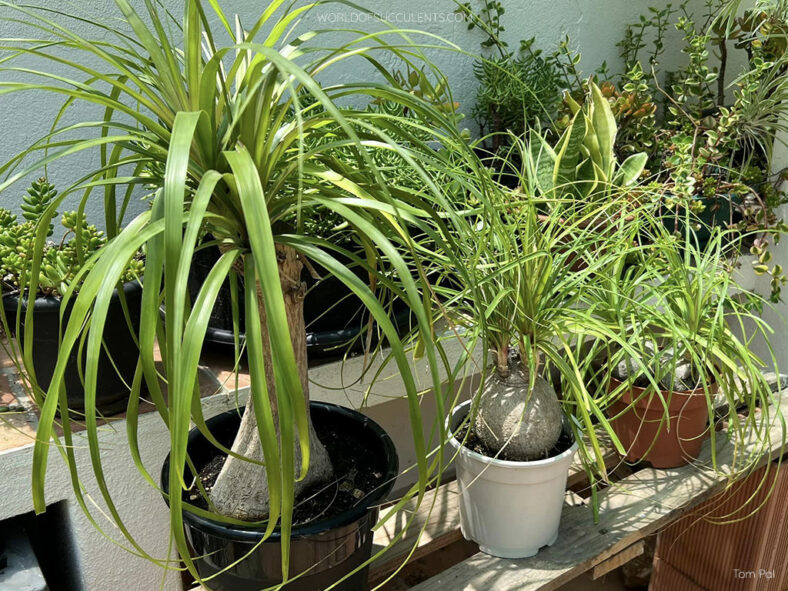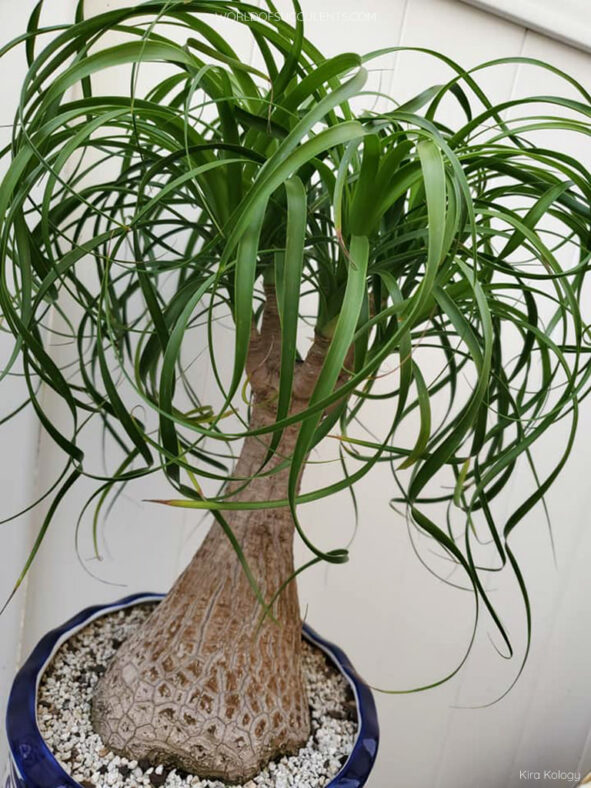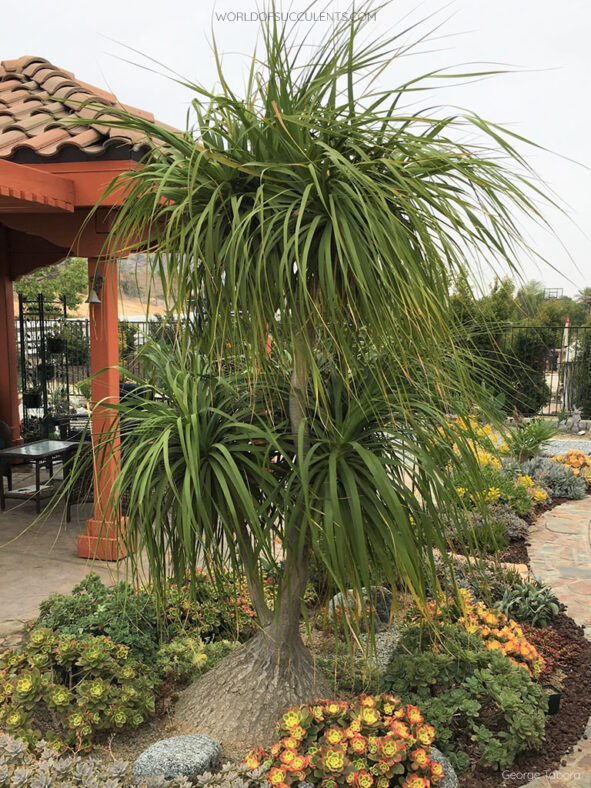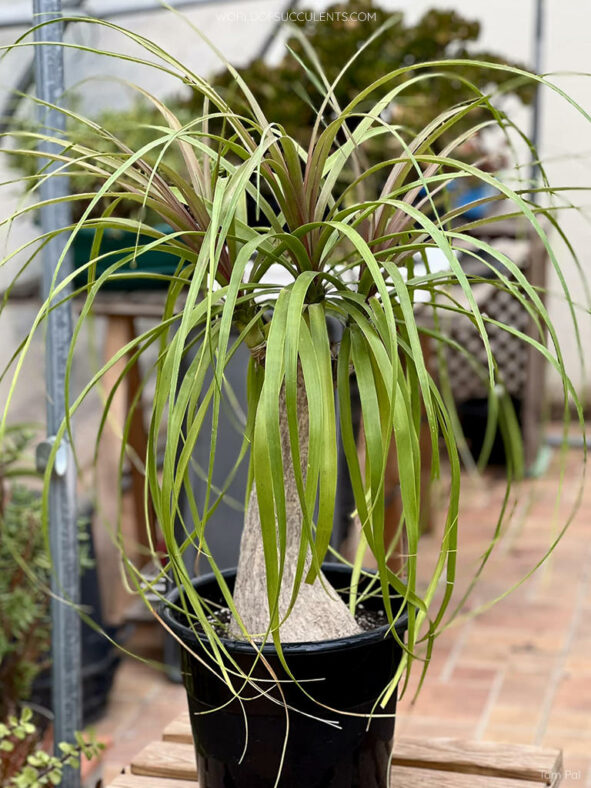Beaucarnea recurvata, commonly known as Ponytail Palm, has gained the prestigious Award of Garden Merit of the UK's Royal Horticultural Society. Despite its common name, it is not closely related to the true palms. This ornamental plant has become popular worldwide and is often grown as a houseplant and an outdoor plant in temperate climate gardens.
Scientific Name
Beaucarnea recurvata Lem.
Common Name(s)
Bottle Palm, Bottle Ponytail, Elephant's Foot, Elephant's Foot Tree, Ponytail Palm
Synonym(s)
Dasylirion recurvatum, Nolina recurvata, Pincenectia recurvata
Scientific Classification
Family: Asparagaceae
Subfamily: Nolinoideae
Genus: Beaucarnea
Etymology
The specific epithet "recurvata (pronounced rek-er-VAY-tuh)" means "bent backward" and refers to the long, backward-arching leaves of this species.
Origin
Beaucarnea recurvata is native to southeastern Mexico. It grows on rocky soils deficient in nutrients, on cliffs, and steep mountains in low deciduous forests, at elevations ranging from 330 to 9,190 feet (100 to 2,800 m).
Description
Beaucarnea recurvata is a caudiciform tree with a distinctive trunk and green drooping leaves arranged in dense clusters at the ends of the branches. It can grow up to 30 feet (9 m) tall. The trunk base is swollen and typically lacks branches when young. It can reach a diameter of 12 feet (3.6 m) and may develop fissures or crackles on its gray surface. Several smaller trunks and sparse branching may develop near the top as the plant matures. The leaves are strap-like with parallel venation and serrated margins and can grow up to 6 feet (1.8 m) long and 1 inch (2.5 cm) wide.
Once mature, Beaucarnea recurvata produces small, cream-colored or pinkish flowers in pyramidal clusters at the branch tips. The flowers appear during late spring or summer. The fruits are reddish, 3-winged capsules, but they are rarely seen in cultivation. This plant is dioecious, meaning it has separate male and female plants; only the female plants produce seeds.

How to Grow and Care for Beaucarnea recurvata
Light: Beaucarnea recurvata grows best in full sun to partial shade. If you are growing it indoors, place it near a sunny window. During the growing season from spring to fall, it enjoys being outdoors.
Soil: To ensure proper drainage and prevent root rot, use a well-draining soil mix, such as cactus or succulent potting mix.
Temperature: Beaucarnea recurvata is intolerant of freezing temperatures and struggles with excessive summer heat, especially when temperatures exceed 110°F (43°C). It grows best in USDA Plant Hardiness Zones 10a to 11b, with average minimum winter temperatures ranging from 30°F to 50°F (- 1.1°C to 10°C).
Watering: During the growing season, water the plant thoroughly when the soil becomes dry. In winter, water it sparingly, about once a month. A plant in a container will require more frequent watering than a plant in the ground.
Fertilizing: Feed Beaucarnea recurvata with a diluted, balanced fertilizer once every month during the growing season.
Repotting: Houseplants are best grown in relatively small pots. When a plant becomes pot-bound, repot it in the spring with fresh soil in a new pot that is slightly larger than the old one. After repotting, give the plant a week or so to readjust before watering it again.
Propagation: Beaucarnea recurvata can be propagated from seed or by separating offsets that form at the base. The best time to separate offsets and sow the seeds is in the spring. Before sowing the seeds, soak them overnight to help initiate germination.
Toxicity of Beaucarnea recurvata
Beaucarnea recurvata is a non-toxic plant that is safe for small children and pets.
Links
- Back to genus Beaucarnea
- Succupedia: Browse succulents by Scientific Name, Common Name, Genus, Family, USDA Hardiness Zone, Origin, or cacti by Genus
Photo Gallery
Click on a photo to see a larger version.


